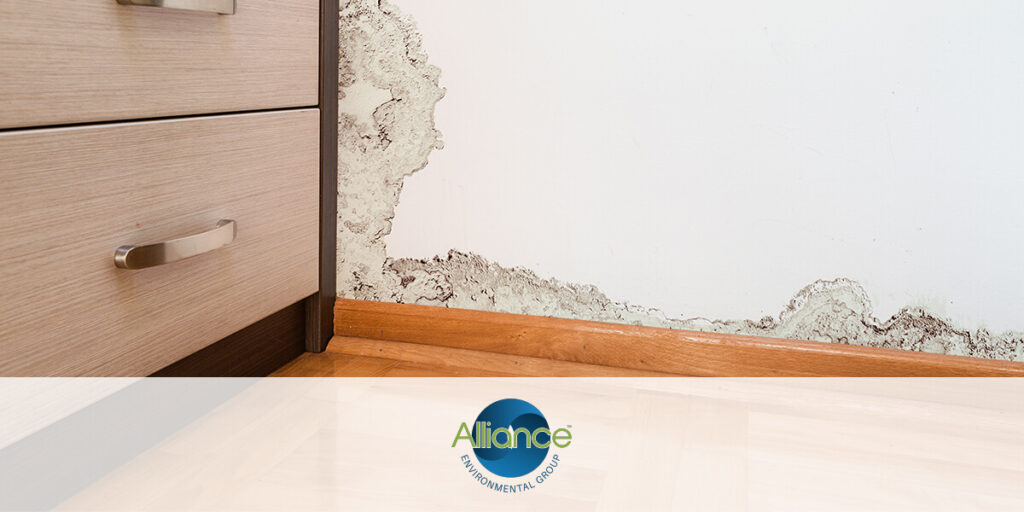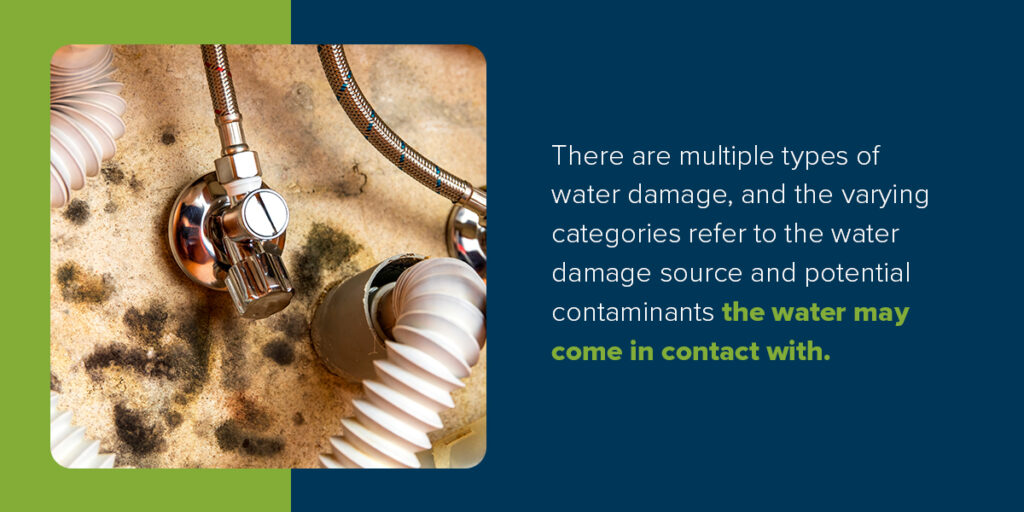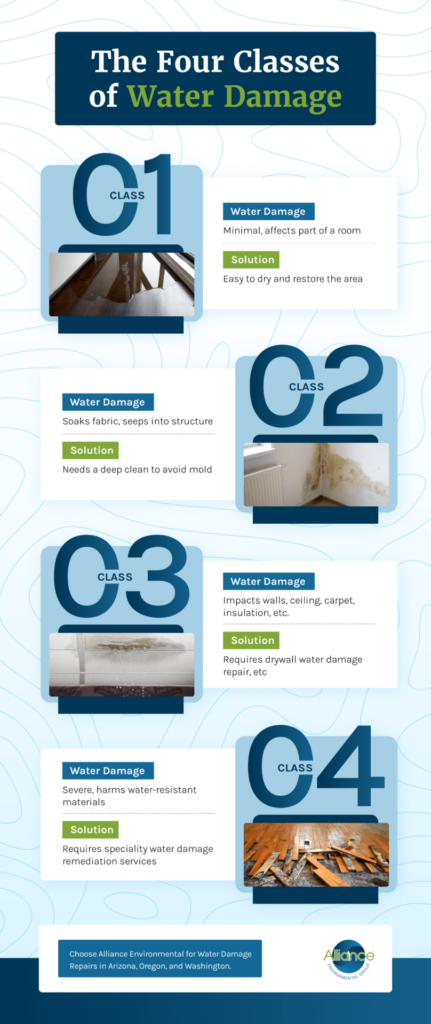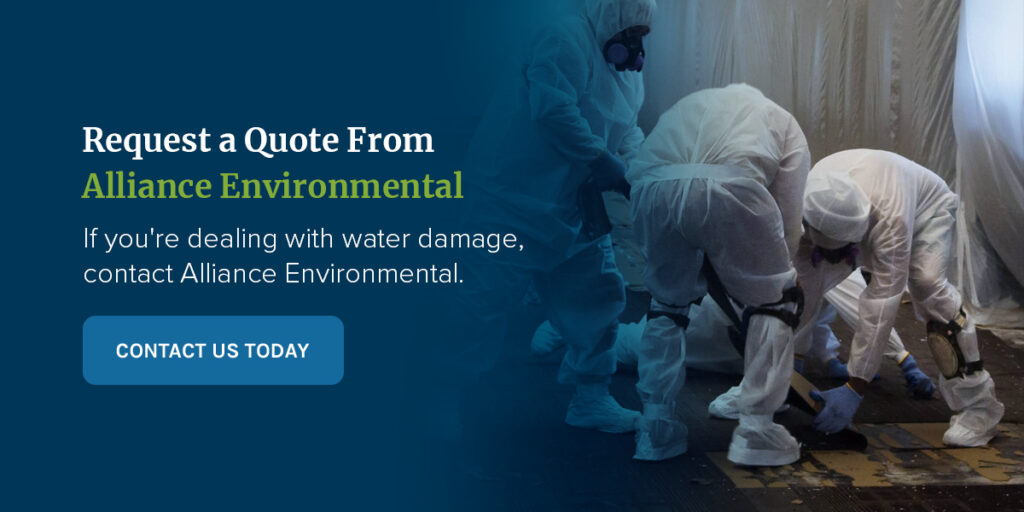AIRTEK
MINTIE
COAST ENVIRONMENTAL
PACIFIC HVAC
ARE NOW A PART OF THE ALLIANCE ENVIRONMENTAL GROUP!
New name, same great service – plus, an array of new service offerings!

Whether you’re experiencing water damage due to a storm, natural disaster or burst pipe, it’s essential to take action immediately. Fast reactions will empower you to restore your property and belongings as soon as possible and minimize health risks associated with different categories of water damage. Even clean water can cause damage that can affect the integrity of various materials and items. Improper drying and restoration techniques can result in long-term issues, like mold, that can be costly in the future.
It can be challenging to determine the water source and whether it is safe or could cause adverse health effects. Whether you’re dealing with sanitary (Class 1) water damage or facing the consequences of black water (Class 4) damage, you must be prepared to handle the situation quickly to ensure the safety of you and others who may come in contact with the water.
In this guide, you’ll find comprehensive information about the categories and classes of water damage to determine the best solution for your business or property.

There are multiple types of water damage, and the varying categories refer to the water damage source and potential contaminants the water may come in contact with. The cleanliness of the water is a significant factor in determining the risk level you’re facing and whether you or anything the water makes contact with is safe.
These categories take into account the originating source and the water’s quality after coming in contact with other materials to determine the range of contamination. These categories are often known as clean, grey and black water, and these terms can be helpful when trying to assess your situation. Below, you can find more information about these categories and how to tell which one you’re dealing with.
Water categories provide insight into the water you’re facing. Understanding these categories can help you determine whether you can salvage damaged items and the potential risks of handling these situations by yourself. Here, you can find information about the three water categories to determine when to request a professional service.

While water categories can help you determine what you need to begin water removal or damage repair, water damage classes can determine what repair options are most suitable for your situation. Regardless of the water damage you’re experiencing, remember that it’s essential to act quickly in any of these situations and to proceed with caution to avoid health impacts and other potential damages. Read about the four water damage classes to assess the best option for your business or property:

When you face water damage, it’s essential to act quickly. When you request services from Alliance Environmental, you can expect quality and timely responses. Our services meet or exceed EPA and OSHA guidelines to ensure you receive the service you deserve. Our cutting-edge tools and comprehensive solutions will get you back in business as soon as possible.
Alliance Environmental is a leading indoor air quality, biohazard, fire life safety, environmental and heat contractor. Our innovative solutions empower business owners and property managers to find comprehensive services for a variety of needs, including mold remediation, demolition, heat treatment, HVAC duct and system services, asbestos, and insulation replacement and removal.
With a combined experience of more than 100 years, our team is passionate and knowledgeable and understands all areas of business, including customer service, finance, marketing and operations. We proudly serve the following industries:
If you’re dealing with water damage, contact Alliance Environmental. We can help with drywall repair, mold removal and floor demolition.
AIRTEK
MINTIE
COAST ENVIRONMENTAL
PACIFIC HVAC
ARE NOW A PART OF THE ALLIANCE ENVIRONMENTAL GROUP!
New name, same great service – plus, an array of new service offerings!